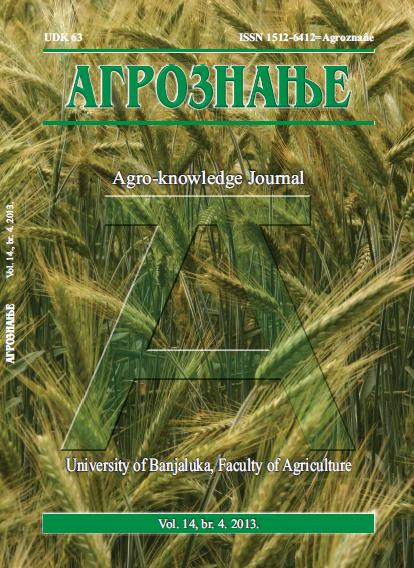Wheat Yield and Weedness under Different Rate of Nitrogen Fertilization
DOI:
https://doi.org/10.7251/AGREN1304497KAbstract
In this study we tested yield and weediness in wheat cultivars Lazarica and Julija Mono grown under different regime of mineral nutrition. This investigation was conducted at the long term experiment on control variant (without fertilizers), second variant with nitrogen application (two sub variants with different rate of N) 2N1 (80 kg N ha-1) and 2N2 (120 kg N ha-1), third variant with NP fertilizer with two different rate of N application: 3N1 (80 kg N ha-1 + 100kg P ha-1) and 3N2 (120 kg N ha-1 + 100kg P ha-1) and fourth variant 4N1 (80 kg N ha-1 + 60kg P ha-1) and 4N2 (120 kg N ha-1 + 60kg P ha-1). Weediness varies in dependence of rate and variant of fertilization. The weed species Consolida regalis Gray, Convolvulus arvensis L., Polygonum aviculare L., Cirsium arvense L., Agropyrum repens L., Polygonum convolvulus L. was dominant on fertilized plots. The analyzed variability of grain yield depends of applied fertilizer variants. The lowest grain yield was found on control variant in both wheat cultivar Lazatica (1880kg ha-1), Julija Mono (1740kg ha-1) while the highest grain yield on variant 3N2 (120 kg N ha-1 + 100kg P ha-1) Lazarica (3724kg ha-1 Julija Mono (4990kg ha-1) and low weediness.Downloads
Published
2013-12-27
Issue
Section
Articles

